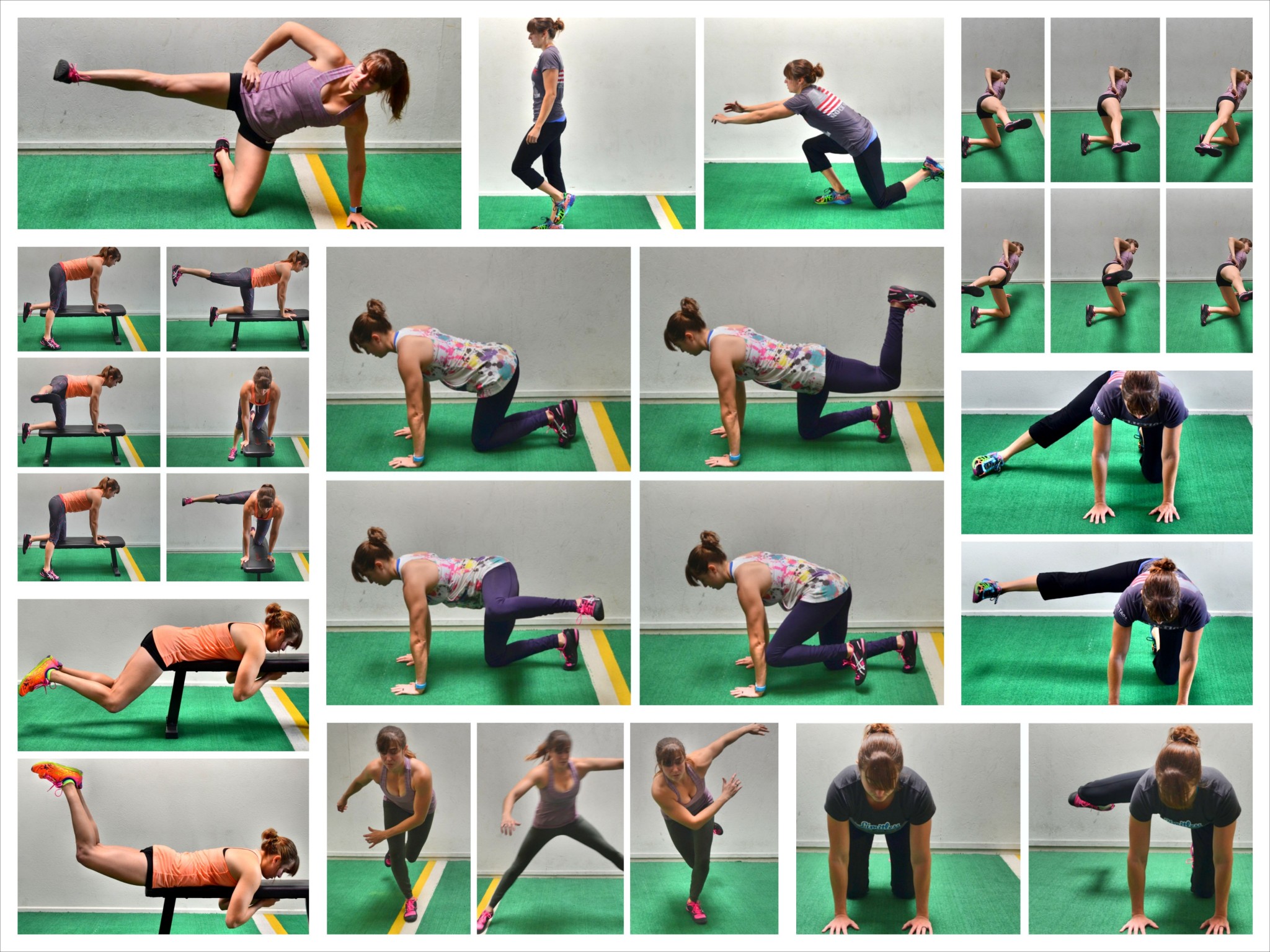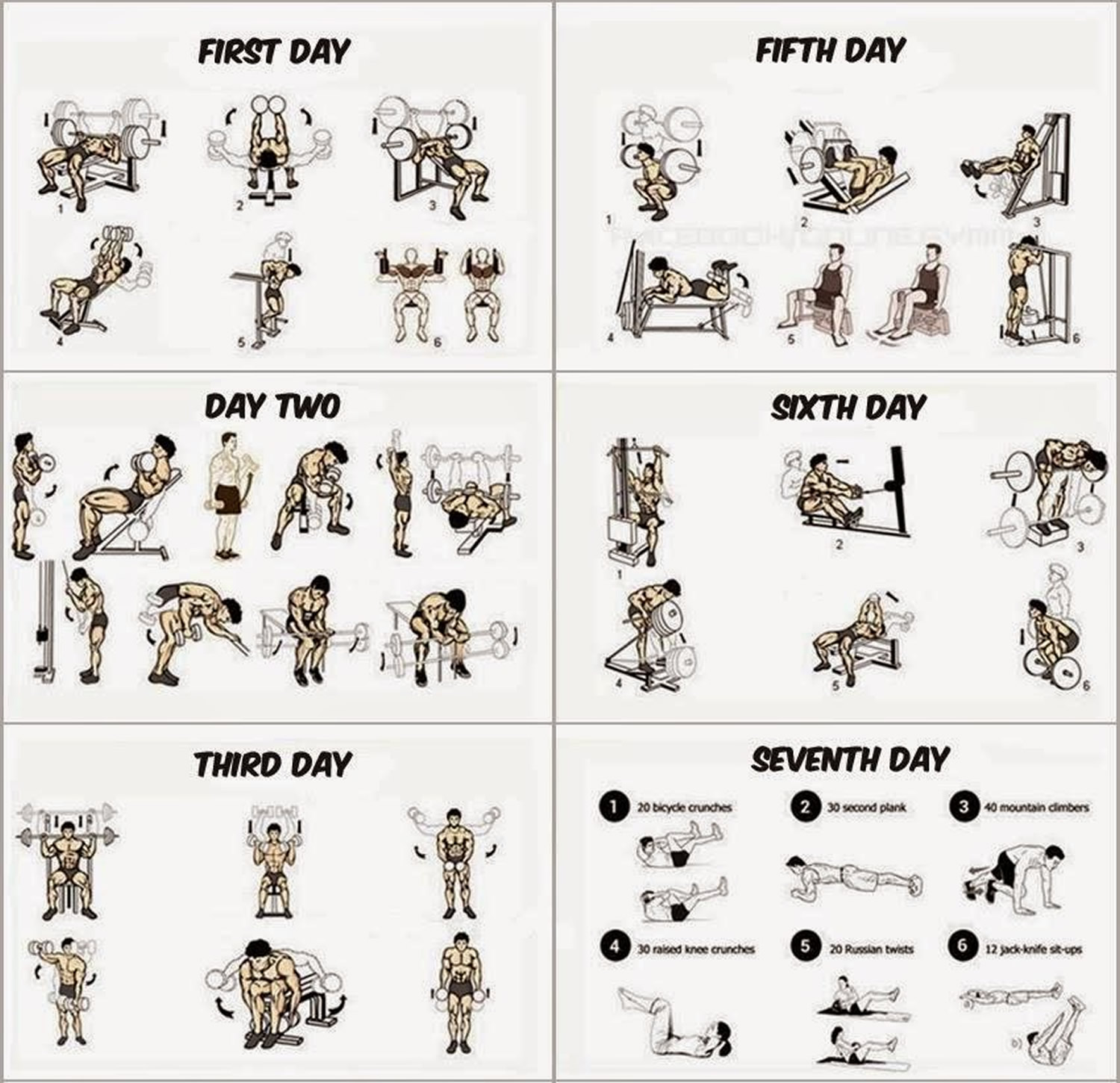Welcome to the ultimate guide to best strength building workouts! In this comprehensive exploration, we’ll delve into the world of muscle-building, providing you with the knowledge and tools to unlock your full strength potential.
From the fundamentals of strength training to advanced techniques and nutritional strategies, we’ll cover everything you need to know to build a stronger, more powerful physique.
Types of Strength-Building Workouts
Strength-building workouts encompass a diverse range of exercises designed to enhance muscular strength and endurance. These workouts can be broadly categorized into three main types: weightlifting, bodyweight exercises, and resistance band training. Each category offers unique benefits and challenges, catering to different fitness goals and individual preferences.
Weightlifting, Best strength building workouts
Weightlifting involves using external weights, such as barbells, dumbbells, or kettlebells, to perform exercises that target specific muscle groups. This form of training is highly effective for building muscle mass, strength, and power. Some common weightlifting exercises include:
- Barbell bench press
- Barbell squat
- Deadlift
- Overhead press
- Bicep curls
- Triceps extensions
Bodyweight Exercises
Bodyweight exercises utilize one’s own body as resistance to perform movements that engage multiple muscle groups. These exercises are convenient, require no special equipment, and can be easily incorporated into any fitness routine. Examples of bodyweight exercises include:
- Push-ups
- Pull-ups
- Squats
- Lunges
- Planks
- Burpees
Resistance Band Training
Resistance band training employs elastic bands to provide resistance during exercises. Resistance bands are versatile and portable, allowing for a wide range of movements and adjustments in resistance levels. They are particularly beneficial for rehabilitation, injury prevention, and improving flexibility.
Some exercises that can be performed with resistance bands include:
- Band-assisted pull-ups
- Band squats
- Band bicep curls
- Band triceps extensions
- Band shoulder presses
- Band lateral raises
Principles of Effective Strength Training: Best Strength Building Workouts
Effective strength training involves adhering to specific principles that optimize muscle growth and strength development. These principles include progressive overload, specificity, and rest.
Progressive Overload
Progressive overload refers to gradually increasing the intensity or volume of your workouts over time. This challenges your muscles, forcing them to adapt and grow stronger. You can achieve progressive overload by increasing weight, sets, repetitions, or exercise difficulty.
Specificity
Specificity dictates that the exercises you perform should target the specific muscles you want to strengthen. For example, if you want to improve your bench press, you should focus on exercises that involve pressing movements, such as the bench press, dumbbell press, and tricep extensions.
Rest
Adequate rest is crucial for muscle recovery and growth. During rest, your muscles repair themselves and rebuild stronger. Aim for 24-48 hours of rest between workouts for each muscle group.
Proper Form and Technique
Proper form and technique are essential for maximizing results and minimizing the risk of injury. Using the correct form ensures that you target the intended muscles and execute the exercises safely and effectively.
Expand your understanding about how to move off the grid with the sources we offer.
Designing a Personalized Strength-Building Program
Crafting a personalized strength-building program is crucial for achieving optimal results. Consider your individual goals, fitness level, and any limitations you may have.
To determine the appropriate weight, sets, repetitions, and rest periods, consider the following guidelines:
Weight Selection
Choose a weight that challenges you while maintaining good form. Start with a weight that allows you to complete 8-12 repetitions with the proper technique.
Discover the crucial elements that make crossfit workouts near me the top choice.
Sets and Repetitions
Aim for 2-3 sets of each exercise, with 8-12 repetitions per set. Adjust the number of sets and repetitions based on your fitness level and recovery capacity.
Rest Periods
Rest for 60-90 seconds between sets to allow for muscle recovery and maintain intensity. For heavier weights, increase the rest period to 2-3 minutes.
Browse the implementation of crossfit workout of the day for beginners in real-world situations to understand its applications.
Progression
As you progress, gradually increase the weight, sets, or repetitions to continue challenging your muscles and promoting strength gains.
Advanced Techniques for Enhancing Strength
Advanced training techniques can push your strength-building efforts to the next level. Here are a few effective methods:
Supersets
Supersets involve performing two exercises back-to-back without rest. This technique increases intensity and time under tension, leading to greater muscle activation and hypertrophy. However, it’s important to choose exercises that target different muscle groups to avoid overexertion.
Drop Sets
Drop sets entail reducing the weight or resistance during a set until failure. This technique forces the muscles to work harder and exhausts them completely, maximizing muscle fiber recruitment. It’s particularly effective for building strength and muscular endurance.
Eccentric Training
Eccentric training focuses on the lowering or lengthening phase of an exercise. By slowing down and controlling the eccentric movement, you increase muscle damage and stimulate growth. This technique is advanced and requires proper form to avoid injury.
Nutrition and Recovery for Strength Building
Nutrition and recovery play a vital role in supporting strength-building efforts. Optimal nutrition provides the body with the necessary fuel and building blocks for muscle growth and repair, while adequate rest allows for recovery and adaptation.
Obtain a comprehensive document about the application of diy off grid power that is effective.
Macronutrient Intake
Macronutrient intake is crucial for strength building. Protein is essential for muscle growth and repair, while carbohydrates provide energy for workouts and recovery. Fats support hormone production and cell function.
- Protein:Aim for 1.6-2.2 grams per kilogram of body weight per day.
- Carbohydrates:Consume 4-6 grams per kilogram of body weight per day, with higher intake on workout days.
- Fats:Include healthy fats from sources like avocados, nuts, and olive oil in your diet.
Hydration
Hydration is essential for overall health and performance. Water transports nutrients, regulates body temperature, and supports muscle function.
- Drink 8-10 glasses of water per day.
- Increase fluid intake during and after workouts.
- Consider electrolyte drinks for prolonged or intense exercise.
Rest and Recovery
Rest is crucial for muscle growth and repair. Adequate sleep allows for the release of growth hormone, which promotes muscle recovery and adaptation.
- Aim for 7-9 hours of quality sleep per night.
- Allow for rest days between intense workouts.
- Engage in active recovery activities like yoga or light cardio on rest days.
Summary
Remember, building strength is a journey, not a destination. Embrace the process, stay consistent, and you’ll be amazed at the results you can achieve. So, let’s get started on your strength-building adventure today!
General Inquiries
What are the benefits of strength training?
Strength training offers numerous benefits, including increased muscle mass, improved bone density, enhanced metabolism, reduced risk of chronic diseases, and improved overall fitness.
How often should I strength train?
For optimal results, aim to strength train 2-3 times per week, targeting different muscle groups each session.
What is progressive overload?
Progressive overload is a fundamental principle of strength training that involves gradually increasing the weight, sets, or repetitions over time to continuously challenge your muscles and promote growth.


